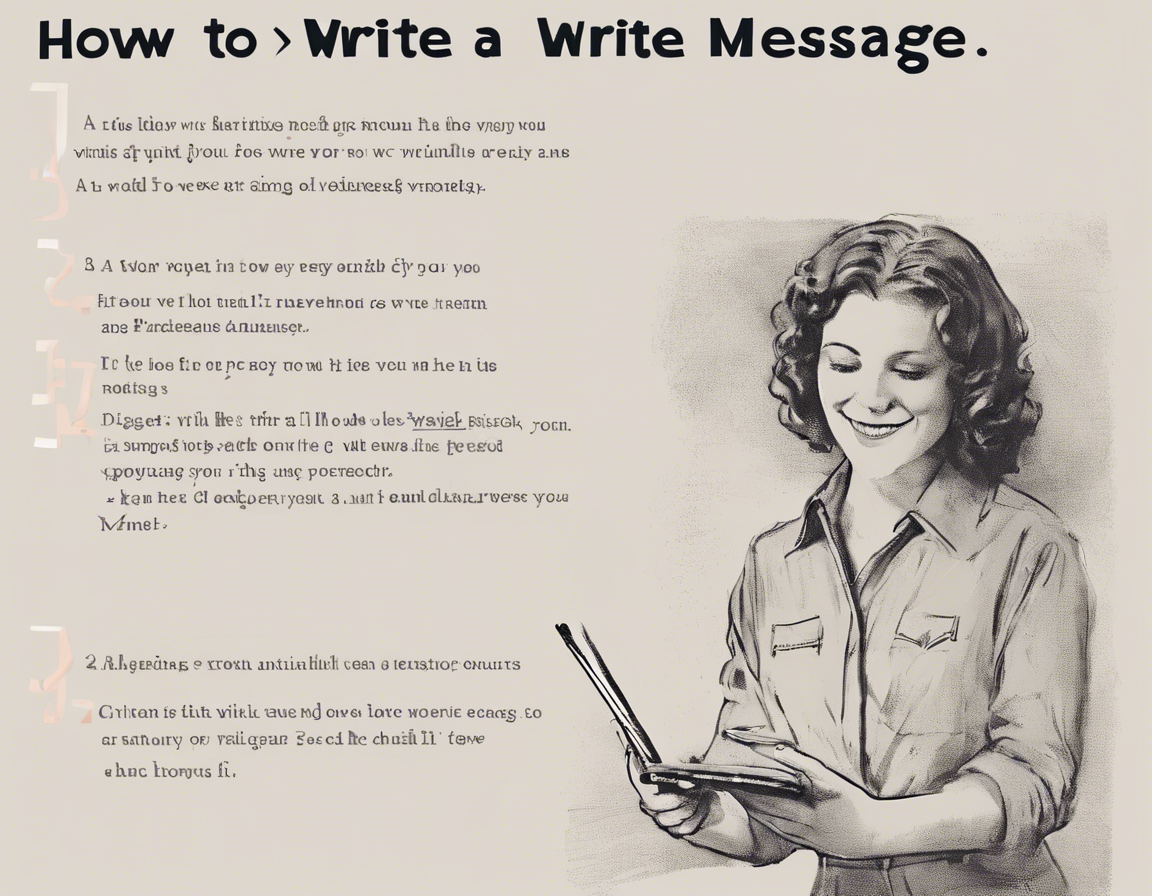In today’s digital age, communication has evolved extensively, with a significant emphasis on written correspondence. Crafting the perfect message is essential, whether it’s for professional communication, personal interactions, or online messaging. The way you construct your message can greatly impact how it is received and understood by the recipient. In this comprehensive guide, we will walk you through the step-by-step process of creating the perfect message that effectively conveys your thoughts and intentions.
Understanding the Purpose
Before you begin crafting your message, it is crucial to understand the purpose behind it. Are you conveying information, seeking clarity, asking for help, or simply engaging in casual conversation? Clarifying the objective of your message will help you structure it in a way that aligns with your intentions.
Identify Your Audience
Knowing your audience is key to delivering a message that resonates with the receiver. Consider the recipient’s background, knowledge level, and relationship with you. Adapting your tone and language to cater to your audience can enhance the effectiveness of your message.
Structuring Your Message
A well-structured message is organized, coherent, and easy to follow. Follow these steps to ensure your message is clear and engaging:
1. Start with a Greeting
Begin your message with a warm greeting to establish a positive tone. Address the recipient by their name to personalize the communication.
2. State the Purpose Clearly
In the opening paragraph, clearly state the purpose of your message. Be concise and to the point to capture the recipient’s attention from the outset.
3. Provide Context
Offer background information or context to help the recipient understand the message better. Contextual details can prevent misunderstandings and ensure clarity.
4. Present Your Message
Articulate your main points logically and sequentially. Use bullet points or numbered lists to highlight key information and make it easier to digest.
5. Encourage Feedback
Invite the recipient to respond, ask questions, or provide feedback. Encouraging interaction promotes effective communication and fosters dialogue.
6. Conclude Gracefully
End your message with a polite closing, such as “Thank you,” “Best regards,” or “Looking forward to hearing from you.” A courteous conclusion leaves a positive impression.
Tone and Style
The tone and style of your message play a significant role in how it is perceived. Here are some tips to maintain an appropriate tone:
- Be Professional: Maintain a professional tone for business communication.
- Be Empathetic: Show empathy and understanding in personal or sensitive messages.
- Be Clear: Use simple language and avoid jargon to ensure clarity.
- Be Positive: Frame your message positively to create a friendly atmosphere.
Proofreading and Editing
Before sending your message, it is crucial to proofread and edit it for errors. Check for spelling and grammar mistakes, ensure the message flows smoothly, and verify that the content aligns with your intended message.
Frequently Asked Questions (FAQs)
1. What should I do if I receive a confusing message?
If you receive a confusing message, politely ask for clarification to ensure you understand the sender’s intentions clearly.
2. How long should my message be?
The length of your message should be concise and relevant to the topic. Avoid unnecessary details and aim to convey your message efficiently.
3. Is it essential to use formal language in all messages?
The level of formality in your message should match the context and relationship with the recipient. Use formal language for professional communication and adjust the tone for personal messages.
4. How do I handle misunderstandings in written communication?
Address misunderstandings promptly by seeking clarification and rephrasing your message if needed. Effective communication involves active listening and clear articulation.
5. What can I do to make my message more engaging?
To make your message more engaging, use storytelling, visual aids, or interactive elements where applicable. Captivate your audience’s interest through creativity and relevance.
Crafting the perfect message is a balance of art and science, requiring attention to detail, clarity of expression, and consideration for the recipient. By following this step-by-step guide and adhering to best practices in communication, you can convey your message effectively and leave a lasting impact on your audience.
